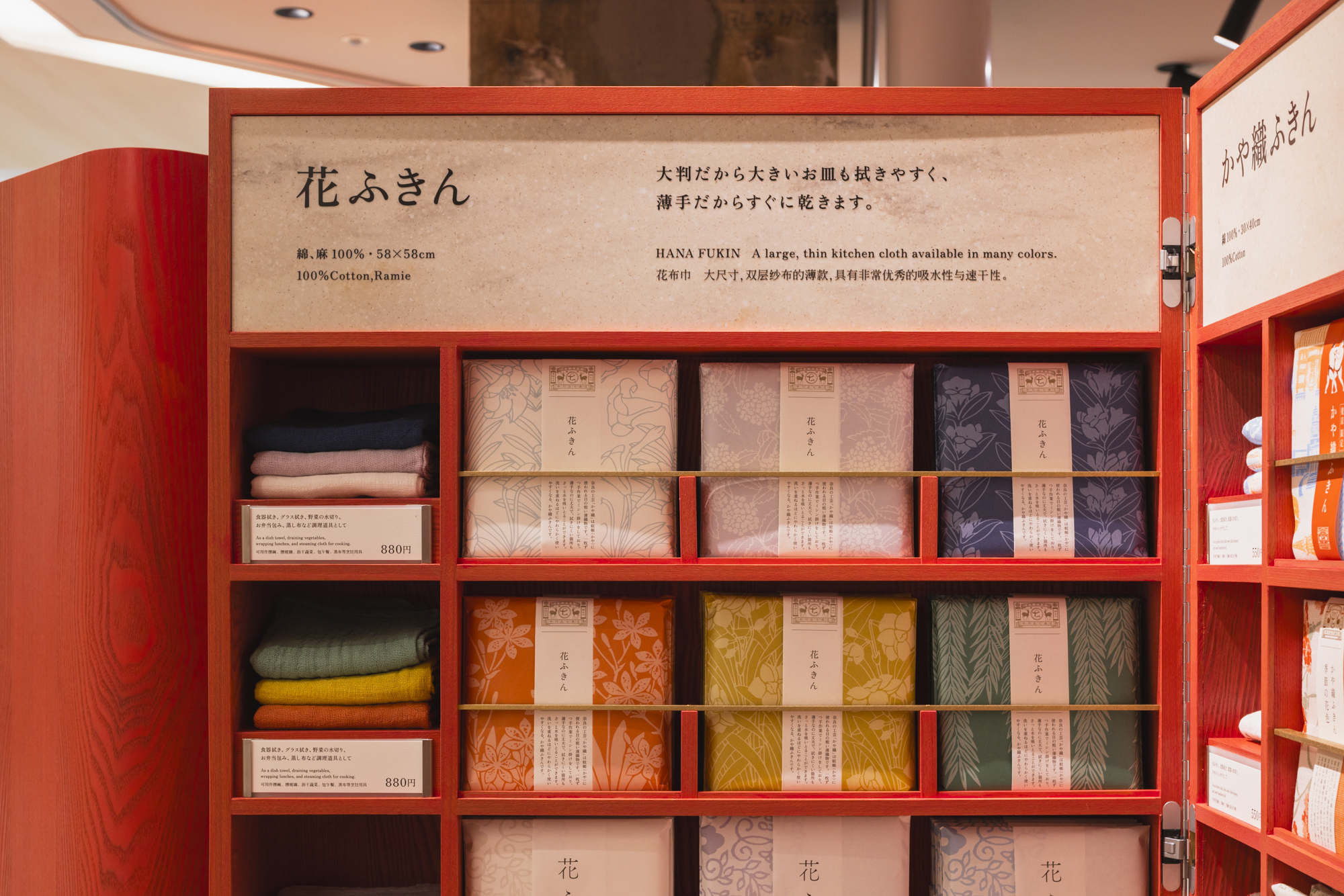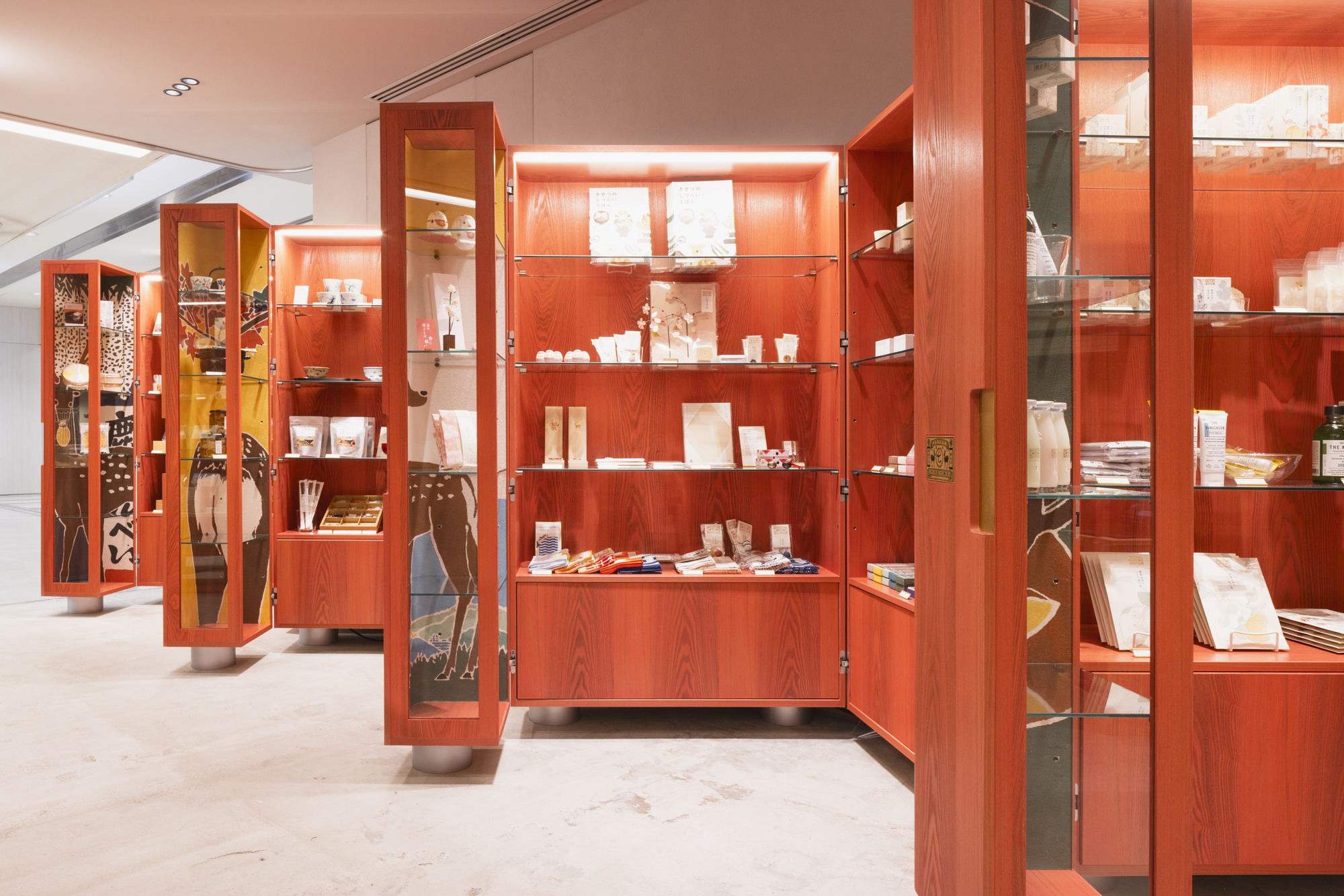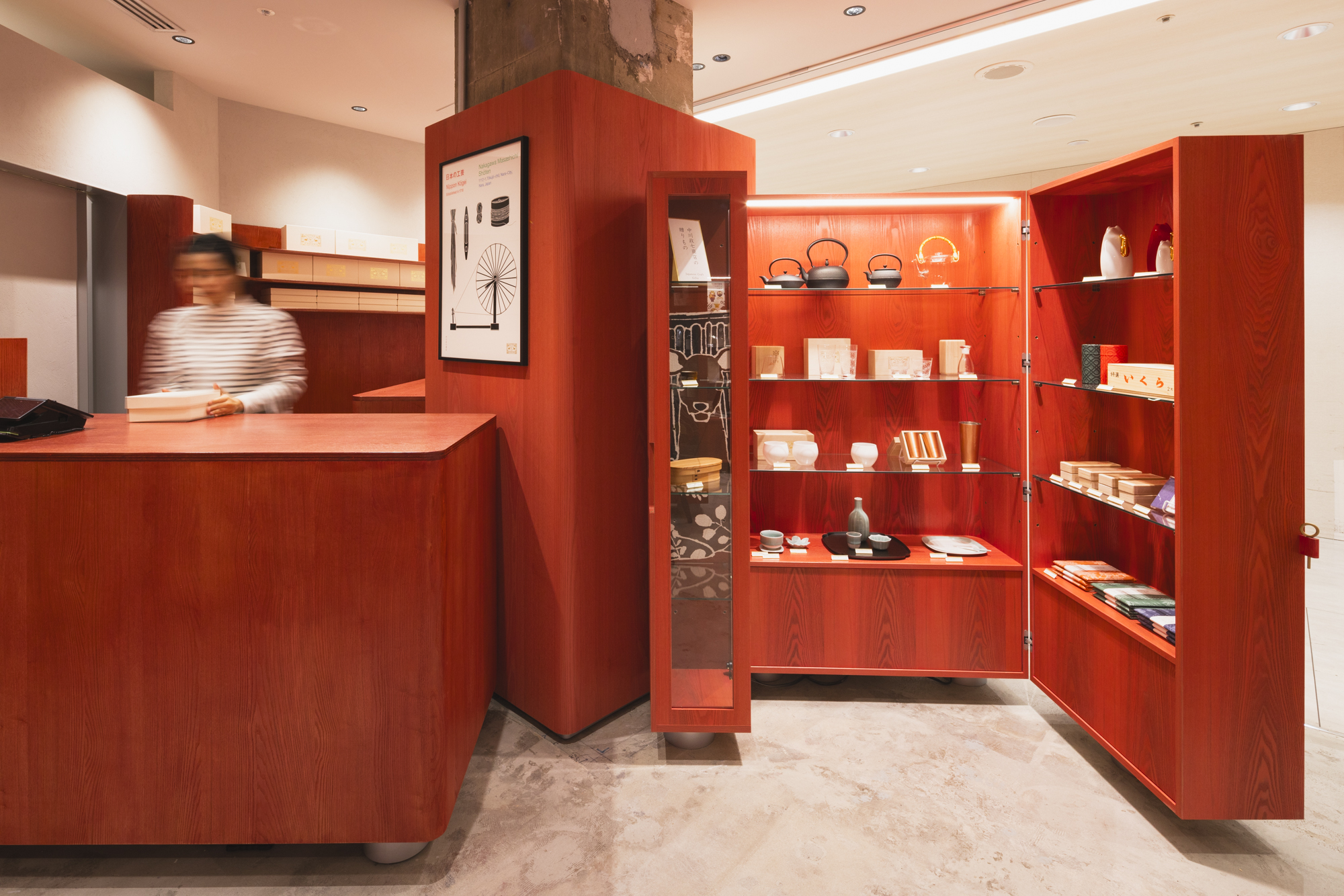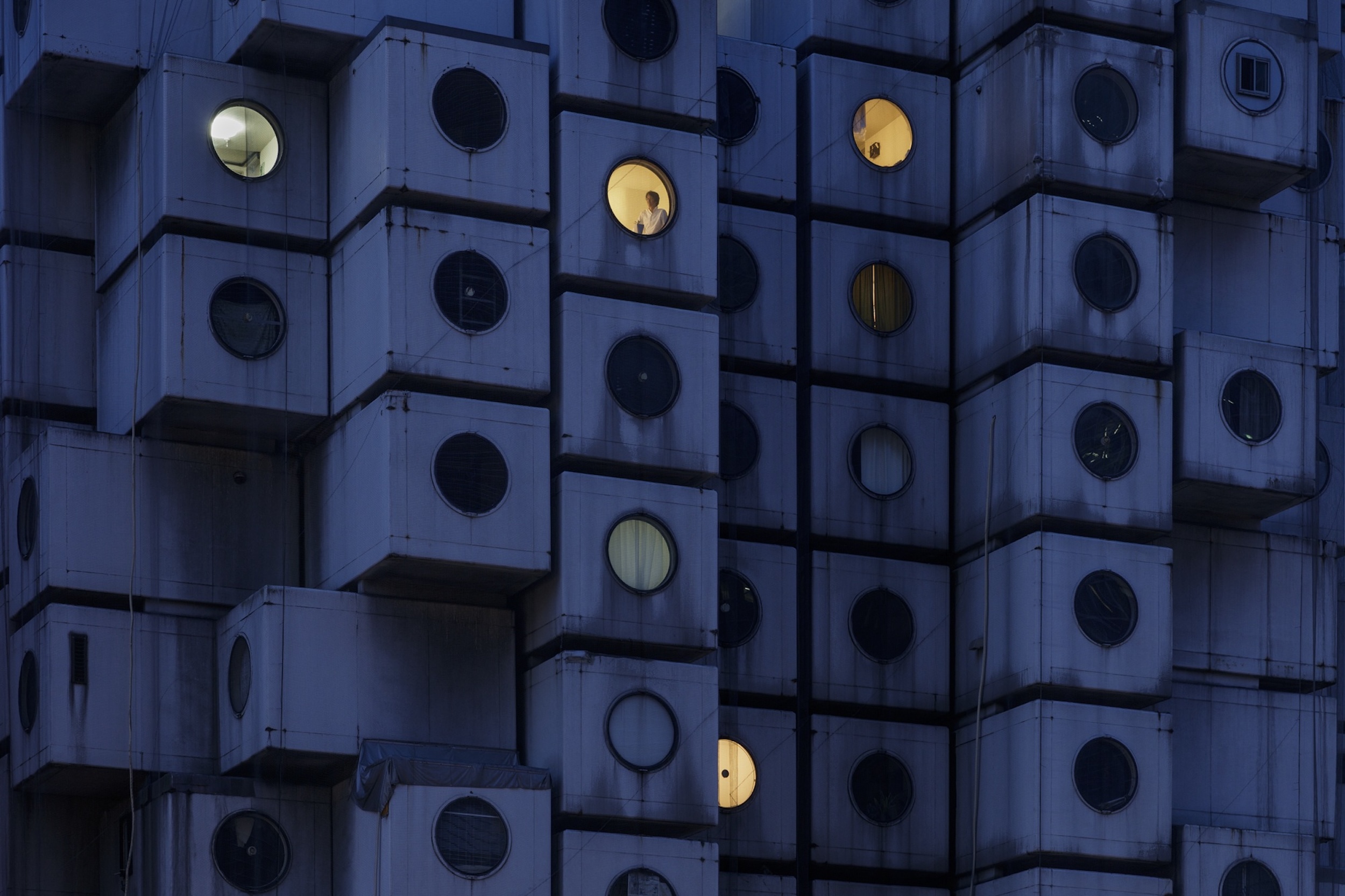Craft store Nakagawa Masashichi Shoten at Narita airport is an ode to travel
The Japanese homewear and craft store Nakagawa Masashichi Shoten wows with bright interior made of moveable ‘trunks’ by Tokyo-based studio 14sd designs

Long-established Japanese craft retailer Nakagawa Masashichi Shoten’s latest outpost celebrates the beauty of travel. The retail interior, set inside one of Japan’s busiest airports, Narita, was created by Yosuke Hayashi of Tokyo-based design studio 14sd – also known as Fourteen Stones Design – and focuses on the sense of discovery and anticipation the start of a journey brings.

Japanese craft retailer Nakagawa Masashichi Shoten at Narita airport
Comprising a series of bold vermillion wooden display volumes designed as oversized trunks, the store, located in Narita Airport’s Terminal 1, features eight striking, red volumes that act as cabinets and shelving for the store’s traditional handcrafted products and souvenir items sourced from across Japan.

‘It is a journey,’ said Hayashi. ‘The concept was based on the story of Nakagawa Masashichi Shoten's travels, which is also compatible with the environment of an airport. We proposed a store interior format consisting only of trunks as a way of creating a sense of travel.’

Constructed with Japanese tamo ash wood veneer selected for its light-coloured grain, the trunks were then painted in vermillion red ‘to give it the character of a traveling trunk.' These elements each feature limestone information panels and brass handle detailing and display artwork depicting Nara’s iconic deer, illustrated by Kutani ware potter Keigo Kamide.

Across the store’s compact 48 sq m footprint, Hayashi optimised the site by designing a layout focused on flexibility. Alongside a retail counter and two larger timber volumes enveloping two permanent exposed concrete pillars, the independent ‘trunks’ feature cylindrical legs with inbuilt casters that allow for moveability. The three-sided trunks can also be easily individually closed unto themselves – akin to a real trunk.

From the outside, only the rear side of the trunks is visible, creating a sense of ambiguity and mystery. By positioning the individual trunks like so, Hayashi intended to create an unassuming store design to inspire curiousity in visitors. Once inside, the interior's rich retail range is revealed.

Hayashi said: ‘We thought about how we could attract people's interest in these fascinating and unique Japanese products and get them to stop and visit our store. We also intended the trunk format to make it difficult for visitors to get a full picture of what is being sold there. Many people are wondering how they can use the time they have before their flight due to the location of the airport.
Receive our daily digest of inspiration, escapism and design stories from around the world direct to your inbox.
'We felt that people would not stop by a store where they could see the whole picture without even entering the store. This is a method that makes people want to enter the store to find out what kind of products are in the many trunks.’

Joanna Kawecki is a Tokyo-based design journalist and consultant. Living in Japan since 2013, she writes extensively about architecture, design and travel, interviewing leading industry figures such as Kengo Kuma and Naoto Fukasawa. She is co-founder of Ala Champ Magazine and design brand IMI Japan, working with craftspersons across the country’s 47 prefectures exploring traditional artisans to innovation entrepreneurs.
-
 This cult Los Angeles pop-up restaurant now has a permanent address
This cult Los Angeles pop-up restaurant now has a permanent addressChef Brian Baik’s Corridor 109 makes its permanent debut in Melrose Hill. No surprise, it's now one of the hardest tables in town to book
-
 French bistro restaurant Maset channels the ease of the Mediterranean in London
French bistro restaurant Maset channels the ease of the Mediterranean in LondonThis Marylebone restaurant is shaped by the coastal flavours, materials and rhythms of southern France
-
 How ethical is Google Street View, asks Jon Rafman in Copenhagen
How ethical is Google Street View, asks Jon Rafman in CopenhagenIn 'Report a Concern - the Nine Eyes Archives' at Louisiana Museum of Art, Copenhagen, Jon Rafman considers technology's existential implications
-
 Matsuya Ginza lounge is a glossy haven at Tokyo’s century-old department store
Matsuya Ginza lounge is a glossy haven at Tokyo’s century-old department storeA new VIP lounge inside Tokyo’s Matsuya Ginza department store, designed by I-IN, balances modernity and elegance
-
 The Architecture Edit: Wallpaper’s houses of the month
The Architecture Edit: Wallpaper’s houses of the monthThis September, Wallpaper highlighted a striking mix of architecture – from iconic modernist homes newly up for sale to the dramatic transformation of a crumbling Scottish cottage. These are the projects that caught our eye
-
 Utopian, modular, futuristic: was Japanese Metabolism architecture's raddest movement?
Utopian, modular, futuristic: was Japanese Metabolism architecture's raddest movement?We take a deep dive into Japanese Metabolism, the pioneering and relatively short-lived 20th-century architecture movement with a worldwide impact; explore our ultimate guide
-
 A new Tadao Ando monograph unveils the creative process guiding the architect's practice
A new Tadao Ando monograph unveils the creative process guiding the architect's practiceNew monograph ‘Tadao Ando. Sketches, Drawings, and Architecture’ by Taschen charts decades of creative work by the Japanese modernist master
-
 A Tokyo home’s mysterious, brutalist façade hides a secret urban retreat
A Tokyo home’s mysterious, brutalist façade hides a secret urban retreatDesigned by Apollo Architects, Tokyo home Stealth House evokes the feeling of a secluded resort, packaged up neatly into a private residence
-
 Landscape architect Taichi Saito: ‘I hope to create gentle landscapes that allow people’s hearts to feel at ease’
Landscape architect Taichi Saito: ‘I hope to create gentle landscapes that allow people’s hearts to feel at ease’We meet Taichi Saito and his 'gentle' landscapes, as the Japanese designer discusses his desire for a 'deep and meaningful' connection between humans and the natural world
-
 Campaigners propose reuse to save Kenzo Tange’s modernist ‘Ship Gymnasium’ in Japan
Campaigners propose reuse to save Kenzo Tange’s modernist ‘Ship Gymnasium’ in JapanThe Pritzker Prize-winning architect’s former Kagawa Prefectural Gymnasium is at risk of demolition; we caught up with the campaigners who hope to save it
-
 A new photo book explores the symbolic beauty of the Japanese garden
A new photo book explores the symbolic beauty of the Japanese garden‘Modern Japanese Gardens’ from Thames & Hudson traces the 20th-century evolution of these serene spaces, where every element has a purpose